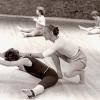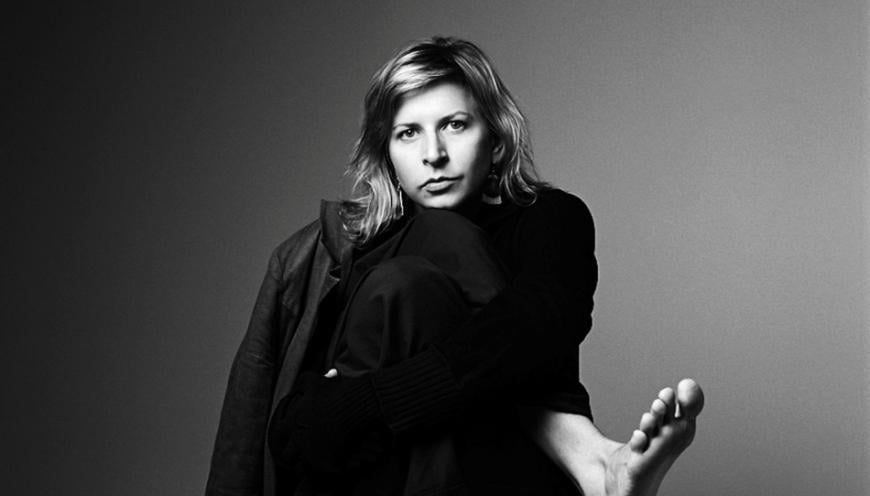
San Francisco Ballet is premiering Mere Mortals, its first commission from award-winning Canadian choreographer Aszure Barton, this month, with performances Jan. 26 – Feb. 1. It will be an occasion of many firsts: Artistic Director Tamara Rojo’s first curated season since arriving at the company a year and a half ago, the first evening-length ballet created for SF Ballet by a woman, the first collaboration between Barton and composer Sam Shepherd (aka Floating Points), and the first ballet that this 90-year-old mostly classical troupe will dance without regard to hierarchy (there’s no separation of dancers into principals, soloists, and corps de ballet) or gender (roles can be danced by either men or women). Those last two points in particular are long overdue.
During a delightful phone interview, Barton revealed how the opportunity came about. “Tamara invited me to come to the English National [Ballet] and revive a piece I had created for them. When she asked me to work with San Francisco, it wasn’t something I expected for sure. I have a deep respect for her. She’s really an amazing woman, an incredibly strong warrior, and a wonderful leader. So, I was really delighted when she reached out to me. She’s really supportive of the people that she believes in. She has a plan, and she’s executing it. I’ve always been impressed by her that way. I think we are aligned in this — that we really believe in putting in the work. She will fight for what she wants.”
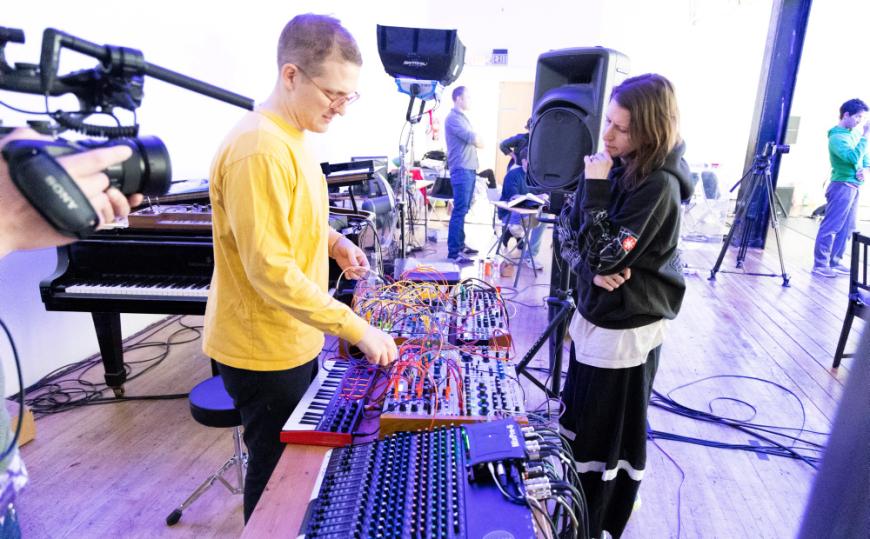
Rojo is responsible for putting together the team that collaborated on Mere Mortals, which includes Shepherd, who’s taking on his first ballet score; Hamill Industries, in charge of the AI-informed visual designs; costume designer Michelle Jank; and, of course, choreographer Barton. The collaboration, based on the ancient myth of Pandora’s box but updated to today’s high-tech world, “has resulted in a truly expansive work that flips a classic story on its head for the modern age,” Rojo said in a press release. “Artificial intelligence continues to grow and evolve, and Mere Mortals will tackle the complicated issues and feelings as well as the exciting creative promise that this new technology holds.”
Although Barton has worked with renowned dance companies before — The National Ballet of Canada, Houston Ballet, American Ballet Theatre, Martha Graham Dance Company, Nederlands Dans Theater, Hubbard Street Dance Chicago, and English National Ballet — she was a bit daunted by SFB’s unusual work schedule. The company learns new works and polishes up revivals between July and November, before The Nutcracker rehearsals and performances that last until the end of December. In late January, the season begins.
“I was nervous at first because of the way the season rolls out,” she admitted. “They rehearse and remount and learn and create during a very particular window. Then, once they open the stage, they are open. It’s not like many other companies, where they learn a work and then perform that work. [Here] they’re learning the work, and they are archiving the work in their bodies, and then they’re layering the work with new pieces that are coming after that. Later, [the dancers have to] dig into themselves and remember what language they’re going to speak.”
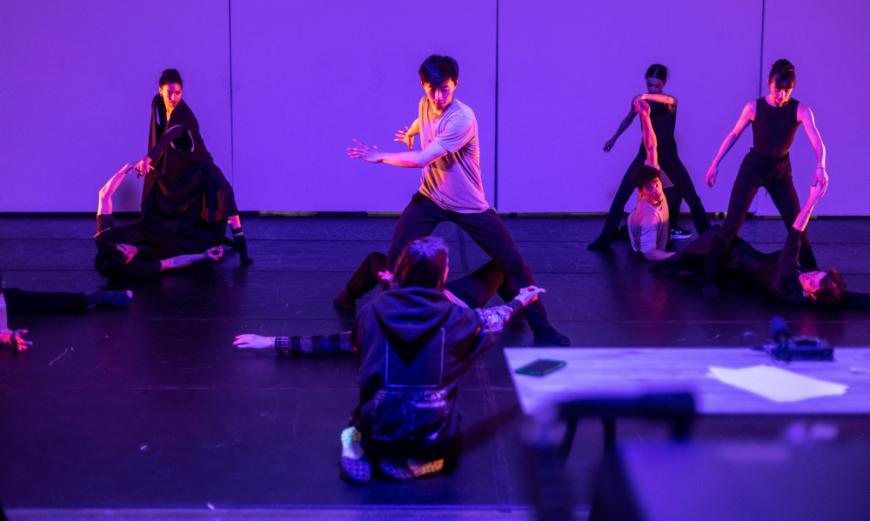
Barton continued, “You know that the body is informing what you’re doing. It’s not the other way around, where you are trying to make the body do something that you want. It comes from the body. That’s where it originates. So, I think dancers are incredibly smart. They’re really the wisest people that I know. That they can store so much information in their bodies is incredible.”
Asked to describe her choreographic language, Barton elaborated, “Every time I’m asked a question, it’s like being asked for the first time. I am constantly changing, and it depends on the day and the moment of the day. I’m really interested in building language collaboratively. The humanity that is within the body interests me. However, because we are human beings, we have so many stories that already exist within our bodies, traumas and experiences. I find it incredibly beautiful to see the individual emerge from the form. Dance can exemplify or show something that is incredibly intimate without even trying to show it.
“What we talked about a lot in the studio is do the movement. Don’t just garnish the movement. Don’t try to make it something it’s not because it’s already there. Every choreographer has their own way of expressing themselves. For me, it’s that the posturing of the body and the quality comes from the individual.”
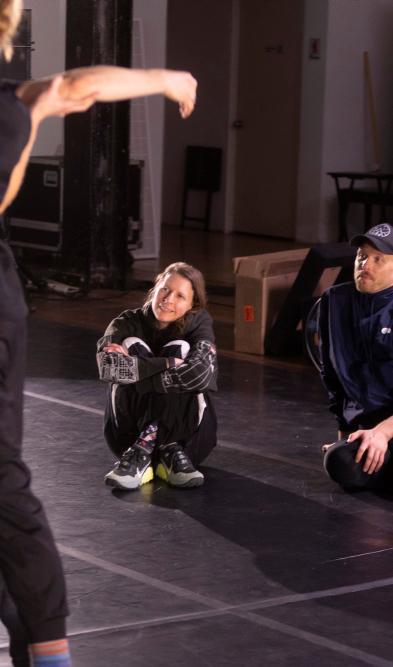
Barton had a diverse background as a dance student. She trained at Canada’s National Ballet School, but even that wasn’t so straightforward. Scrutinizing her choreography now has brought the realization that she always rebelled against strictly classical form. In her own words, “Growing up, tap was my first, and I took Highland dancing and all sorts of [other] forms [from] when I was very little till I was a teen. Then, I went to ballet school.” She started studying Limón and Graham technique as part of the curriculum, both of which she loved, and she connected more with the contemporary choreographers who were coming in. “I was happy, too, delighted to try to be a ballerina for a while,” Barton didn’t hesitate to add.
“I have been rebelling since I was a child and actually was one of the many students that got in trouble a lot and [was] threatened to be kicked out. I think that was because I was really not understanding what I was being asked to do. I wanted to be able to bring humor and my own self into the studio.
“I would react and become defensive as a younger person. I had a voice and would gather my friends to celebrate being ourselves. Rebelling was through choreography. I did that with my sisters growing up, when there was trouble at home or really anything. We would disappear into the basement and make dances. For me [choreographing] has been where I feel most myself.
“I actually was just thinking about that this morning. I am so that same person. Why is it that in the studio I am so peaceful internally but I am completely a mess sometimes outside of the studio? It’s because I feel like I can be present [in the studio]. I trust myself more in creation and in an environment where I’m able to be patient and be present. As soon as I step outside of that, I really have to work hard on being patient with myself.
“One of the greatest gifts in my life was a disappointment when I was dancing as an apprentice with The National Ballet of Canada,” Barton revealed. “I have an amazing mother who was very honest and upfront with me. She had heard of my curiosity about choreographing and said, ‘You should go speak to the director if you want honest answers.’ So, I had an appointment to meet with Reid Anderson, who was the director at the time. I said, ‘Do you see a future for me in the company?’ And he said, ‘Yes. However, you’re not a priority for me.’ I really appreciated that. I left the company because I just felt like I didn’t want to be waiting in the corps. That just wasn’t in my nature. I wanted to rebel and go out and see the world. After that, I auditioned for choreographic funding, and that’s when I started my little venture [Aszure Barton & Artists], when I was 18. That honesty was just incredible. And I think that Tamara also has a brutal honesty, which I really appreciate as well.”
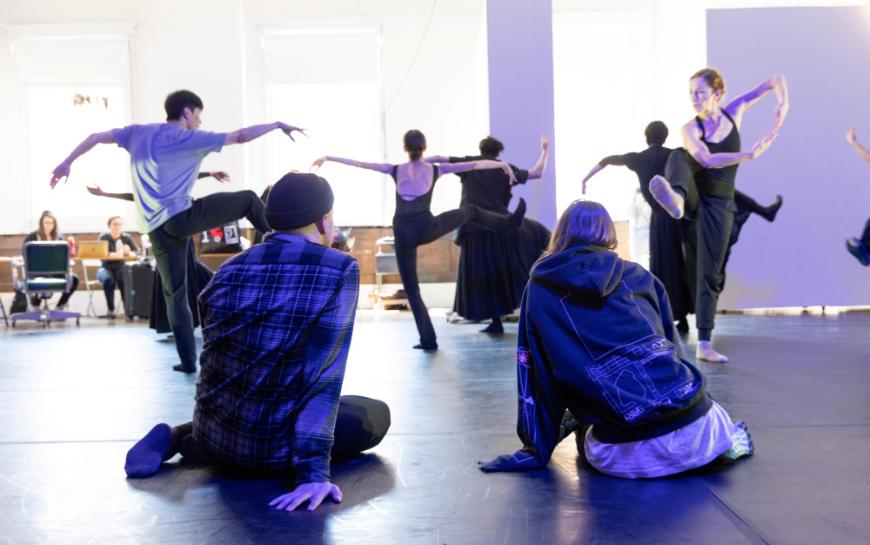
Barton spent time in New York, Montreal, and Europe. In New York, she encountered [choreographer] Wendy Osserman, “who taught me how to improvise and connected me with authentic movement, which is similar to Gaga [technique] but was way before it emerged. It gave me permission to explore that weird, wild side of myself, which was just incredible to discover. The dancers I’ve worked with have taught me everything I know. It’s like that conversation back and forth for so many years. And I’m interested in working with different people who come from different forms or have danced a lot of different techniques. I’m always learning.”
Besides working with individual dance companies on single projects, Barton is in the middle of a three-year residency with Hubbard Street Dance Chicago, where she is annually resetting one piece and premiering a new one. And with Aszure Barton & Artists, the entire company works on developing choreography. She concluded, “I absolutely feel such deep gratitude for the work that I get to do, the people that I get to be around, to share space with. I feel really privileged and lucky to be in such a cooperative and understanding and collaborative environment. I think there are a lot of people in the world that don’t get to relate to each other in the way we do, in our physical, intimate state.”


